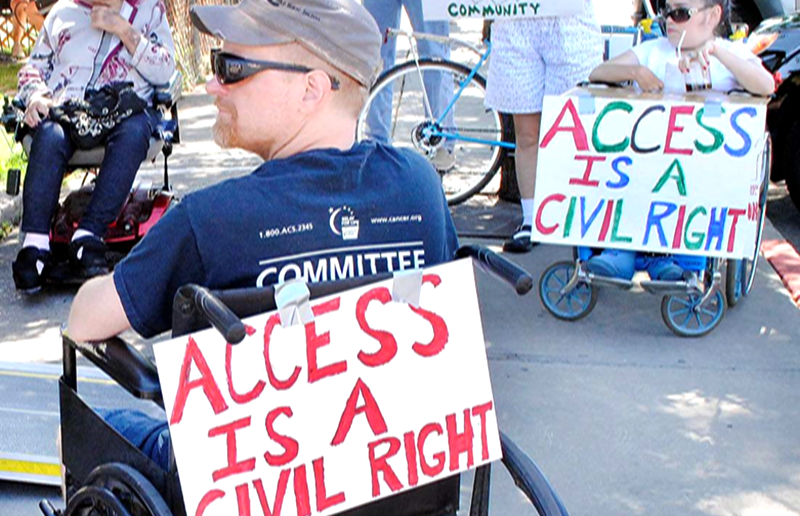Americans with Disabilities Act (ADA)
The Americans with Disabilities Act (ADA) was enacted 30 years ago and updated effectively in 2010 with the sole purpose to prohibit discrimination on the basis of physical or mental disability. Title III of the Act prohibits discrimination against the pre-dened class of people in public accomodation operated by private entities, including senior living centers.

In response, it has become a norm for these care facilities, for example, to install WiFi network allowing their senior living residents to connect their handheld devices to the internet for access to services such as telehealth, teleconsultations, and videoconferences.
The number one priority for anyone in need of a senior care facility is the assurance that their loved one (s) are protected, happy, and safe. The Covid-19 pandemic, for instance, has reiterated on the signicance of keeping senior residents connected with their families and friends through effective IT solutions. Senior care centers with managed IT solutions have ensured a constant connectivity and communication which has signicantly enhanced their quality of care. Being IT- savvy is a key strategy these centers have used to attract new residents to their facilities.
U.S Current State of Vision Impairment in the Elderly
According to the Center for Disease Control and Prevention (CDC), 97% of residents in residential care facilities have at least partial vision. In addition, cases of early-age macular degeneration are projected to increase twice by 2050, starting from 9.1 million to 17.8 million for adults aged 50 years and above. Cases of diabetic retinopathy, on the other hand, are expected to quadruple by 2050, from 2.5 million to 9.9 million for adults above the age of 65 years.
Vision impairment ranks among the top 10 disabilities in adults, according to CDC. Thus, the problem can cause signicant suffering, and a diminished quality of life if appropriate measures are not taken to support the elderly with the disability.

Assistive Devices for Vision Impairment in the Market Today
Assistive devices compensate for all communication disabilities, including hearing and vision loss. Assistive devices for vision loss are useful in increasing, maintaining, and improving the functional capabilities of persons with partial vision.
The assistive technologies global market for the visually impaired is projected to reach $6.4 billion by 2028 from $4 billion in 2019 at a compound annual growth rate (CAGR) of 7.8% (2020 - 2028). Persons with severe to moderate vision impairment are in desperate need of assistive devices for their care and support.
Vision loss not only affects the eye and visual system of a person, but also affects one's quality of life (QOL), independence, and mobility. However, low vision assistive devices, or superior devices for that matter, are hard to nd today; thanks to the Vision Buddy team who came up with a product that will eventually improve the lives of people with low vision.
Devices such as the Vision Buddy have stepped into these markets as a solution to a growing problem in this landscape.
What Is Vision Buddy
Vision Buddy is the world’s rst ultra-simple Television Watching System for the visually impaired. The low vision community has been deprived of high quality of life for decades, and Vision Buddy is the assistive device built a future where people with visual impairment are independent again and are able to enjoy little things in life usually taken for granted.

The device works by simply plugging the Vision Buddy Streamer to an existing cable tv box or any other tv provider, and watch live Television on the Vision Buddy headset.
Vision Buddy is specially designed for various low vision eye conditions like Age-related Macular Degeneration, Glaucoma, Retinitis Pigmentosa, and others.
Users can zoom in or out to enjoy a movie theater experience right in their living rooms. As if that is not enough, users can switch to magnication or camera mode with a click of a button and see the world around them.
